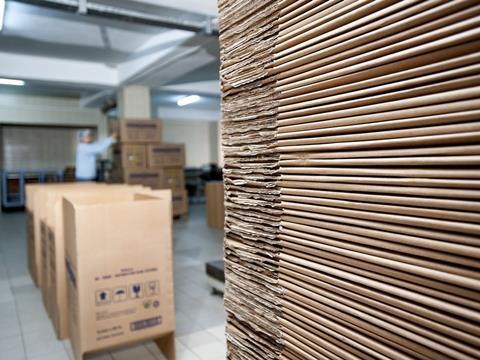
A study released by Smithers suggests that the global packaging industry has returned to solid growth following the challenges of the COVID-19 pandemic in 2020, with its total value expected to reach $1.1 trillion in 2021 – a landmark figure, according to the group.
The Future of Global Packaging to 2026 compiled data from across packaging segments and material types, including paperboard, metal, glass, rigid plastics, flexible plastics, paper, and foil. Smithers has also tracked consumer demand, changes in sales channels for packaging goods, and the introduction of new imperatives across eight regional and 57 national markets.
In the report, Smithers says that the packaging industry has seen a growth of 4.8% over 2020-21 and forecasts a return to a steady compound annual growth rate (CAGR) of 3.9% between 2021 and 2026. This will reportedly yield a total market value of $1.22 trillion in 2026.
Smithers identify China as the largest national market worldwide, worth $256 billion in 20201 and expected to remain the fastest-growing through to 2026. In addition, Smithers predicts that Asia will be the leading contributor to world growth in the packaging industry going forward, with other key players like Japan and India being worth $53.2 billion and $48.2 billion respectively.
While the US market is currently worth $197.2 billion, Smithers’ report suggests that this region will see the slowest rate of expansion up to 2026.
According to Smithers, paperboard packaging – which includes corrugated, folding cartons, and liquid packaging board – will expand at the fastest rate over the next five years. Smithers attribute this to a growing preference for fibre-based packaging due to brands’ sustainability goals and legislation aiming for a circular economy.
In particular, paperboard packaging has allegedly benefitted from a sharp increase in e-commerce sales during the COVID-19 pandemic, which Smithers claims will result in a more enduring shift in consumer purchasing patterns that will further boost its growth. The group predicts that folding carton use will also increase, especially for luxury items, pharmaceuticals, beverages, and retail food takeaway formats.
Smithers places rigid and flexible plastics as the second-fastest expanding materials segment due to a predicted rise in design innovations and new recycling technologies, including mechanical and chemical, over the five-year period forecast in the report. Additionally, Smithers says that plastics are popular in developing markets as consumers transition to buying more packaged goods, providing convenient, effective, and low-cost solutions.
A slower rate of growth than the global average is predicted for glass, metal, and flexible papers, according to Smithers. Meanwhile, Smithers adds that flexible foil consumption is expected to decline as mono-material barrier plastics begin to replace multi-layer laminates.
In terms of end-use applications, industrial/transit is the largest segment, apparently accounting for 41.6% of world sales in 2020. This is followed by food and beverages, representing a 29.6% and 13.9% share respectively.
Smithers proposes that healthcare is forecast to grow its packaging sales at the fastest rate. This appears to represent a recovery from the COVID-19 pandemic, when a reduced number of non-urgent medical appointments led to a fall in deliveries for some segments like the tube market. The food and beverage market will see the next-highest expansion in packaging sales, Smithers adds.
In the industrial sector, intermediate bulk container (IBC) sales are predicted to grow at the fastest rate, allegedly because of increased demand for plastic and steel drums due to their durability and reusability. Smithers, in a report focused on the global industrial packaging market, says that it expects this format to reach a value of $66 billion in 2024.
In July, Smithers released a dedicated study on the challenge of the COVID-19 pandemic and its impact on packaging supply chains. This report found that there was a shortage of a number of materials in 2020 alongside record price hikes, as economies began to recover and demand surged. Both this report, and Smithers’ most recent study, put forward the case for growth in some segments as a result of the pandemic, especially e-commerce.











